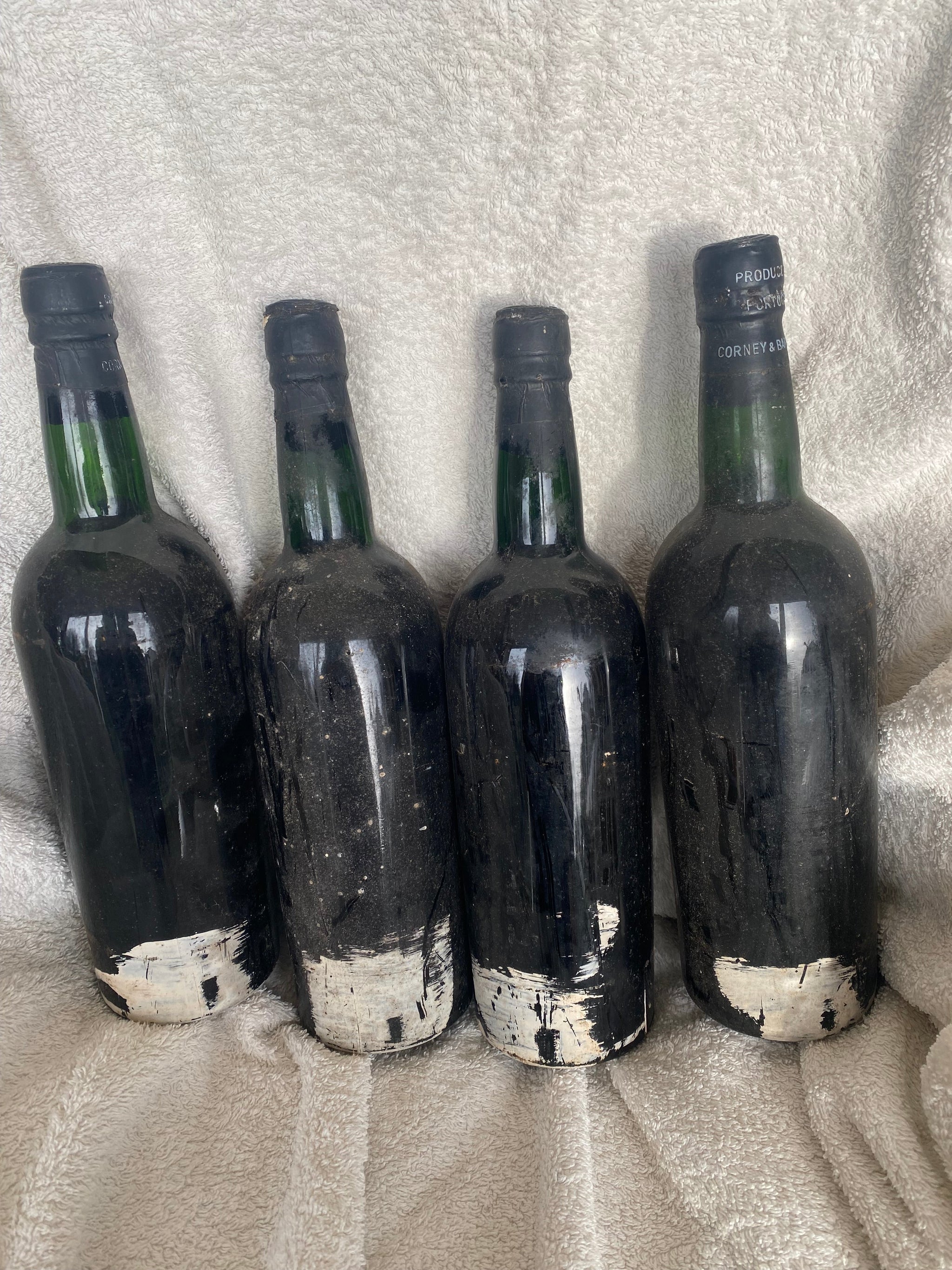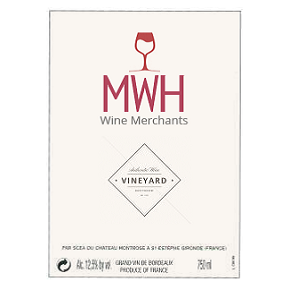Sherry is one of the world’s finest wines. For centuries this fortified wine from southern Spain has captivated wine lovers the world over and has even found its way into Shakespeare’s plays (as ‘sack’). Even though its history is richer than a fine old Oloroso, sherry remains one of the most misunderstood and maligned wines there is. This lack of understanding has led to wine lovers missing out on a wonderful and unusually affordable fine wine experience.
To dispel some of the myths and to give a clearer understanding of this wonderful wine, here’s MWH Wines’ buyers’ guide to sherry. In it we’ll look at where sherry comes from, its styles - from the fresh-tasting dry Fino to decadently sweet Pedro Ximenez. We’ll look at what ‘flor’ is and how this curious-looking thin film of yeast helps make these wines unique, and recommend some sherry producers that will help you enjoy the best of this extraordinary wine.
Where is Sherry From?
Sherry is made in the Denominacion Origen (D.O. – the Spanish equivalent of France’s appellation d'origine controlee or A.C.) of Jerez-Xeres-Sherry in the province of Cádiz in the region of Andalusia in southern Spain. Many of the vineyards overlook the Atlantic Ocean and these provide both welcome cooling breezes that ameliorate the often-fierce summer temperatures and a subtle salty tang to wines like Manzanilla.
Production is grouped around the triangle of towns of Jerez de le Frontera, El Puerto de Santa Maria and Sanlucar de Barrameda. While each has wines its renowned for – Manzanilla from Sanlucar de Barrameda, for example – arguably the defining factor in the style of wine that’s produced is the type of soil its produced on.
The three towns are sited on three types of soil, the distinguishing factor between them being the percentage of chalk it contains. As a rule of thumb, the higher the chalk level, the finer the style of wine that can be produced.
- Albariza - is the lightest soil, almost white, and best for growing Palomino Fino grapes. It is approximately 40% chalk, the rest being a blend of clay and sand. Albariza preserves moisture well during the hot summer months and reflects the sun to aid ripening
- Barros – is a dark brown soil, 10% chalk with a high clay content and is often planted with Pedro Ximenez and Moscatel
- Arenas – is a yellowish soil, also 10% chalk but with a high sand content
This warm, semi-arid region only has three authorised grape varieties (see below) but it crafts these into a wonderful range of styles from bone dry to unctuously sweet:
- Palomino Fino –this is another example of a dull grape being able to do marvellous things in one place – others include Champagne’s Pinot Meunier and Cognac’s Ugni Blanc. High yielding and widely planted in Spain it thrives on the chalky soils of the region where it produces large bunches of golden yellow grapes which ripen in early September. This forms the basis of styles such as Fino, Palo Cortado and Oloroso
- Pedro Ximenez –central to the unctuously sweet Sherry style that bears its name, Pedro Ximenez, or PX as its also known, is too low in acidity to make great table wines. Naturally high in sugar the grapes are either picked very late (though not when affected by noble rot) or sun-dried (‘aselo’) to concentrate the sugars further. The resulting wines are lusciously sweet, dark and weighty and can last for decades
- Moscatel –planted all over Spain – all over the world, in fact - this aromatic grape lends itself well to the creation of sweet wines of varying qualities
How Is Sherry Made?
MWH is renowned for its Vintage Ports and we are often asked what’s the difference between Port and Sherry. Well, aside from different grapes and coming from different countries, the main difference is the way they are made - specifically, when the spirit is added or when its ‘shocked’ as we say. Port has the spirit added before the fermentation has been completed which stops some of the sugar turning to alcohol and that’s what makes it sweet. Sherry on the other hand has it added once the fermentation has been completed which is why most Sherries are dry.
There are a couple of other differences too:
- Sherry is rarely created as a vintage wine – it is traditionally a blend that is created through fractional maturation, better known as the ‘solera system.’ The solera system is a when a barrel of wine is made and over time some is drawn off and bottled. To keep the barrel full new, younger wines are added. Over time you get a blend of old and young wines that create something that is greater than the sum of its parts. The same practice is often used in Madeira. Sometimes you will see solera wines with a year on them which indicates the year that the solera was started rather than being a statement of when the wine was made.
- Yeast is of huge importance to Sherry– for classic pale Sherries like Fino, Manzanilla and Palo Cortado, yeast is fundamental to its style. Once these have fermented a thin film of yeast grows over surface of the wine and stops it oxidising. During winter months this dies back only to return in the spring. This extraordinary process keeps Finos pale and delicate and allows older Palo Cortados to remain lighter and fresher even after many years of maturation.
What Styles Of Sherry Are There?
Sherry comes in all manner of styles, from light and tangy Fino to the dark, weighty dry Oloroso through to the syrupy P.X. and Moscatel. Below we have a list of the most commonly encountered styles of Sherry:
- Fino – the classic aperitif, Fino is delicate, lemon yellow and often comes with a tang of yeast. Contrary to popular belief, this type of Sherry is extremely food-friendly and goes wonderfully with tapas, grilled white fish and creamy cheeses
- Manzanilla– as we have said this comes from Sanlucar and its wines have a noted salinity to them which both off-sets the freshness and adds complexity and a certain savouriness. There are three styles of Manzanilla; Fina, Pasada and Olorosa which roughly equate to the Jerez styles of Fino, Amontillado and Oloroso
- Palo Cortado- increasingly common, a Palo Cortado is basically an aged Fino. Over many years the flor comes and goes allowing a slow, steady oxidation without seeing the acidity die away. The combination of freshness, richness and weight makes this one of our favourite styles
- Amontillado – this is what happens to Fino after the flor has died. Mid-brown, fragrant and packed with crushed nuts and dried fruits with a cleansing acidity and fine, dry finish, this is another excellent aperitif and goes well with consommé
- Oloroso– a good Oloroso should be mahogany brown, nutty, rich, intensely fruited with plenty of dried fruits and peel tones and have a bone-dry finish. The exception to the last rule is the ‘Oloroso Dulce’ which are sweetened – sometimes with dried grape juice called ‘mistela’ – to create a massive, sweet, coffee-liquor tinted wines such as the glorious Matusalem
- Cream Sherry – the pale version of this – Croft Original and the like – have proved enormously popular and have done much for the industry’s fortunes. These sweetened Finos are fine in their way, but to our minds they distract from the unadulterated versions
Who Are The Best Producers?
 Like Port, there are many ancient Sherry shippers – Gonzalez Byass was founded in 1835, Hildago in 1792 and Barbadillo in 1821- and like Port the question of who is the best shipper is largely a matter of personal taste. For us, the following seem to be the ones that we are consistently drawn back to:
Like Port, there are many ancient Sherry shippers – Gonzalez Byass was founded in 1835, Hildago in 1792 and Barbadillo in 1821- and like Port the question of who is the best shipper is largely a matter of personal taste. For us, the following seem to be the ones that we are consistently drawn back to:
- Gonzalez Byass – their range is extensive and encompasses big name brands such as Tio Pepe – arguably the most famous Fino – through to more niche, rarefied wines. Their 12-year-old Palo Cortado, Leonor, is one of the finest we have ever tasted; fabulously rich and well-fruited, its freshness and precision is phenomenal, a true fine wine. At the other end of the spectrum their Dulce Matusalem is indulgence bottled.
- Hildago– their Manzanilla Fina is a sublime example of this excellent wine. Fresh, tangy and with just the right amount of salinity, it’s as easy to drink as a Sauvignon Blanc! The Pastrana – an aged Manzanilla – is wonderfully complex with notes of crushed nuts and dried berries overlaying the classic, refined Fina body.
- Lustau – Lustau’s Almacenista range of Sherries are a complete joy. An almancenista is basically a warehouse owner who ages wines for small independent producers. Since 1981 Lustau have been bottling small quantities of these awesome wines under their own label and they have become some of the most sought-after (and expensive) wines on the market.
Like To Know More About Sherry?
Well we hope this blog has whetted your appetite for this glorious and shamefully overlooked wine. Sherry – in all its majestic guises – is an affordable treat and a wine that is well worth exploring. If you would like some more help or advice then please feel free to get in touch with the MWH Wines team. You can call us on 0118 984 4654 or email MWH Wines here and we’ll get back to you as soon as possible.

